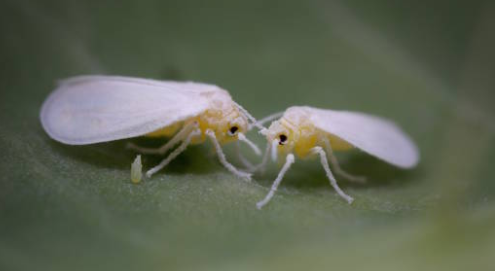At this time of year, we have lots of bugs coming and going in the garden. It’s a great time to observe nature and experience the ebbs and flows of pest predator interactions.
It’s important we can identify the good from the bad, especially if you are new to edible gardening. The FFH team have put together a list of some creepy crawlies you might find in your garden this summer, and some tips on how to manage the particularly pesty ones!
Traditional “Bad” Bugs
Earwigs 
Earwigs chew holes in leaves, especially those fresh young leaves of your bean, lettuce or broad bean seedlings! They only come out to feed at night. However, earwigs are great at decomposing and breaking down our composts.
How to control: Baited Jars! simply put 1cm of soy sauce, linseed oil or other oil concoctions in an old glass jar, and bury in soil so that the top of the jar is level with the soil. The earwigs will be attracted to the smell, fall into the jar and drown in the liquid.
Slugs & Snails
Slugs and snails often emerge to feast on young seedlings during and after rain. They tend to be attracted to sugar cane mulch which is full of sugar and yeasts.
How to control: Beer traps similar to the earwigs, put a container of beer in or around your seedlings. The sugar and yeast from the beer will attract snails and slugs and keep them away from your seedlings.
Whitefly 
You may find every time you move in the garden you are greeted with a flutter of little white insects. Don’t be worried, many gardeners across Melbourne have this problem! Whitefly is a type of aphid, causing speckled damage to leaves of your veggies, leaving the leaves with scribbly white lines, white blotches, curling, or wilting.
How to control: Trap crops (or also known as sacrificial crops) are plants you add to your garden to attract pests away from your edible garden. Different insects prefer different trap crops. Nasturtiums, Nettles and French Marigolds can attract (and distract!) aphids such as Whitefly.
The Good Guys!
Lacewings
Lacewings control whitefly, aphids, mites and other sap suckers. They can be difficult to spot as they use debris to cover their back as a disguise.
Ladybirds 
There are many different varieties of ladybirds you may find in your garden. Most eat anything, including whitefly and fungus. On top of their pest-control duties, ladybirds are also pollinators!
Praying Mantis
These guys will eat any other arthropod they can reach! They stay still until their prey comes within reach and then they strike.
Hoverfly 
Hoverflies are often mistaken for bees or wasps, you’ll find them buzzing around your garden this Summer. They prey on aphids.
Predatory Wasps 
Predatory wasps target all types of ‘bad’ bugs including caterpillars, whitefly and even other wasps.
It is important to begin seeing your outdoor space as an ecosystem. All bugs (good and bad) create a rich diversity and interact with one another to achieve a balance. Next time you spot a pest in the garden, try to relax and witness nature take care of the imbalance for you!
Sign up to our newsletter to ensure you don’t miss out on an upcoming resource all about natural pest remedies.
– Georgia, FFH team 🌱